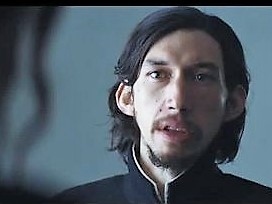Silence *** (2016, Andrew Garfield, Adam Driver, Liam Neeson) – Movie Review
I know I’m going to regret this, but here goes. Director Martin Scorsese is determined to give us a bad time from the get-go for his extreme, take-no-prisoners 2016 religious drama with torture from the start, torture that continues more or less unabated for the film’s two hours and 40 minutes, making it literally a torture to sit through.
Dear Mr Scorsese, you are one of my favourite directors of all time, maker of several of my best movies of all time. You know everything about films and filming. But this time I’m very sorry to say that I don’t care for your film at all. It is in the The Passion of the Christ (2004) category of movie for me, sincere but misguided and, for me, alienating.
I’ll be kind, in a way that I don’t think you weren’t kind to me, and award it the same three star rating I did The Passion of the Christ. I think, for both films, you have to share their hard-line Christian, and Roman Catholic, beliefs for appreciation and understanding.
Andrew Garfield and Adam Driver play Rodrigues and Garrpe, Portuguese Jesuit priests, Catholic missionaries who face torture, persecution and death, and the ultimate test of their faith, when they travel to Japan to try to locate their missing mentor Ferreira (Liam Neeson) and to propagate the forbidden religion of Catholicism in Buddhist 17th century Japan.
Garfield is good in a huge, very difficult role, pitching it right (though he doesn’t sound very Portuguese or seem very 17th century). Neeson in a relatively small role is even better, adding much gravitas as the tortured priest. Driver’s part is subsidiary and then just falls away, so there’s little he can do. And Ciarán Hinds is briefly effective as Father Valignano, the priest who, rightly, very reluctantly agrees to let them go into the danger zone.
The Japanese actors such as Asano Tadanobu have an uphill struggle as they are playing the villains of the piece. Scorsese doesn’t seem to have much time for Buddhism or the Japanese. His film is dedicated to the Christians in Japan.
I wanted to leave the cinema after 10 minutes, but sat grimly on till the bitter end. You’re supposed to leave uplifted in some way, I guess, but I left miserable and deeply depressed, a mood reflected in London’s damp, dark, dreary atmosphere.
I woke up next morning after seeing the movie, still thinking about the appalling nature of the violence in it, haunted by the nightmare that it offers. Mr Scorsese needs to talk to his priest before he makes his next film. I know you wanted to upset me, Mr Scorsese, and you did. It is of course supposed to be the ultimate test of faith for me in you as film-maker, and of course I have failed, just like the priests but I still have you in my heart and soul.
Technically it is all first rate, obviously. There are no problems with the efficiency and literacy of the screenplay by Scorsese and Jay Cocks is based on the novel by Shûsaku Endô. That is a big thing because writing 17th century dialogue for 21st century actors and audiences isn’t easy.
Rodrigo Prieto’s cinematography is smoothly imaginative, Thelma Schoonmaker’s Film Editing is as sharp as ever, Dante Ferretti’s production and costume design is painstaking and effective without being showy.
I don’t suppose we could have a comedy next time, could we, please, Mr Scorsese? No, I didn’t think so.
It is rated R or UK 15 for disturbing violent content, including people burned alive, tortured and left on a cross in the ocean to drown.
© Derek Winnert 2017 Movie Review
Check out more reviews on http://derekwinnert.com




